Listen to this article now:
SaaS is one of the most competitive industries out there. To be able to compete with other market players, products need to ensure a well-informed growth strategy and a continuous assessment of their customers’ satisfaction, among other things.
In this article, we’ll take a closer look at the most important metrics SaaS businesses should incorporate in their decision-making. We’ll explore the intricacies of churn rates, customer acquisition costs, customer lifetime value, and many other essential indicators software-as-a-service companies should keep their eye on.
Let’s dive right in.
1. Customer Lifetime Value
Customer lifetime value (CLV) is one of the vital metrics that allows you to better understand the success of your customer experience strategy. CLV helps you establish how valuable a customer is to your business, from the beginning to the very end of your interaction with them.
Customer lifetime value also can provide you with insight into whether the quality of your services is conducive to long-term relationships with your clientele. If your CLV is high, it’s safe to assume that your clients are happy with the services you provide. On the other hand, a low CLV is indicative of a customer base that doesn’t stick around for too long.
Why is it important?
First and foremost, CLV helps companies understand whether there’s something wrong with the quality of their services or one of their touchpoints. It stimulates businesses to conduct interviews with their customers or collect their feedback in order to improve and optimize their offering.
The beauty behind this metric is that it makes you think in a customer-centric manner, which allows you to understand when, where, why, and under what circumstances your customers choose to pay for your services. It'll help you see beyond the number of sales you close and focus on the customer journey.
As a result, a CLV-centric mindset will also help you focus on retaining your customers, which will enable you to build multi-year relationships with your clients instead of just closing new deals.
How to calculate customer lifetime revenue?
As is the case with many indicators, there is a broad spectrum of ways to calculate them. Below, we’ll explore two very basic methods that will help you figure out your CLV. Your approach can vary depending on the type of service you provide, your business model, and other factors.
One way of calculating the CLV is the historical method. To do this, we need to leverage another value called ARPU (average revenue per user). To find out the ARPU, we need to divide the total revenue for a certain timeframe by the number of customers in the same period.
So let’s say your service has earned $10,000 in 3 months by providing services to 15 customers. Your three-month ARPU is $10,000÷16=$625. Your annual ARPU is $625x4=$2500.
A more common way of figuring out the CLV for SaaS is multiplying the average purchase value by the average purchase rate and the average customer lifespan.

How can it be reflected in the UX roadmap?
Understanding the source of your dwindling CLV will enable you to learn a lot about your customers. It will allow you to gather a deeper understanding of their pain points, which, as a result, will provide lots of actionable insight into their preferences, needs, and aspirations.
Similarly, you’ll be able to better measure their satisfaction, as well as better tailor the services you provide to your best customers.
How can you improve CLV via better UX?
CLV is an all-encompassing metric—everything can affect the customers’ willingness to continue using your product. Respectively, there is a broad spectrum of things we can look into to improve this metric. Here are some of them:
Improve the onboarding process;
Provide value-packed content that keeps customers engaged;
Incorporate upselling and cross-selling strategies;
Offer high-end customer service (you can measure the quality of service through NPS forms);
Build relationships (seek all kinds of connection inside and outside of your app);
Listen to your customers (gather qualitative and quantitative metrics);
Detect common pain points & provide solutions;
Offer your clients a personalized experience;
2. North Star metric
The North Star Metric (NSM) is an indicator that a company uses as a focus for its growth—it best reflects the value that your company brings to your customers.
Why is it important?
North Star metrics allow companies to get everyone focused on one goal, which is often broken into sub-metrics. However, it’s important to underline that companies with complex offerings and business plans can have multiple NSMs, which, in turn, are also broken down into numerous smaller component metrics.

Dividing the NSM into smaller metrics is extremely important as it promotes personal accountability and ownership among individual workers and teams. An essential quality for these sub-metrics is actionability—they must offer a clear connection to the main goal and provide a visible contribution to it.
The beauty of The North Star metric is that it’s an exercise in making a company's overall strategy more straightforward and more accessible, which is easier to remember, understand, and apply. For instance, e-commerce businesses will often focus on indicators such as customer lifetime value (CLV), the number of purchases per timeframe, percentage of repeated purchases. Consumer tech products will predominantly look at daily average users (DAU), the number of messages sent, and others.
How to find your North Star metric?
There are eight common questions you should ask yourself that will allow you to establish what your perfect NSM is:
What is an action that defines your customers’ success?
Does this apply to all of your customers?
Can you measure it?
What is the frequency at which you can measure it?
Are you in total control over it, or are there external factors that might influence this metric?
Does it reflect your growth, or can it be considered a vanity metric?
Does your potential NSM influence all people on the AAARRR funnel?
Can you track your NSM often enough?
North Metric Workshop
When settling on a north star metric, a good activity we've developed is a north star workshop. It helps us align the expectations within a customer's team and collectively arrive at the most important things you should measure. The workshop includes the following steps:
Step 1: Introduction
Step 2: Identify the game we're playing
Step 3: Examples
Step 4: Generating ideas
Step 5: Selecting NSM
You can find more information on each of the steps in our downloadable checklist.
How can it be reflected in the UX roadmap?
NSM gives you deep insight into your customer’s behavior and creates levers to drive future growth. It leads to understanding your customers and unifying your team on how to better bring value. You can connect the dots between customer behavior and business goals. You can even create personalized user behavior that is driven by recent interactions and current behavior. You can devise strategies at optimal points along the customer journey using the most effective channels.
How to improve North Star Metric via UX?
Have a customer journey map. Having a detailed view of your customer’s experience with your service will enable you to improve customer interactions by prescribing your users’ optimal experience with it;
See customers as individuals. Adopting a genuinely customer-centric approach will allow you to understand how your product can deliver the most value to its users in order to leverage their loyalty;
3. Churn
The churn rate in SaaS is the percentage of customers that stopped using the service within a particular period.
Why is it important?
It’s a crucial metric that reflects a product’s health and overall customer satisfaction with it. This indicator is often used to learn more about how the service performs and how well it retains its customers.
How to calculate churn rate?
Essentially, your churn rate is the rate at which your product is losing its customers over a specific timeframe. While this does seem like a fairly straightforward metric, there’s a myriad of ways SaaS products can calculate it based on the services they provide or their business model. Here are some common ways software-as-a-service businesses choose to define their churn:
Number of cancellations during a particular timeframe;
Percentage of cancellations relative to existing subscriptions during a particular timeframe;
Value of recurring business lost during a specific timeframe;
Percentage of recurring value lost during a particular timeframe;
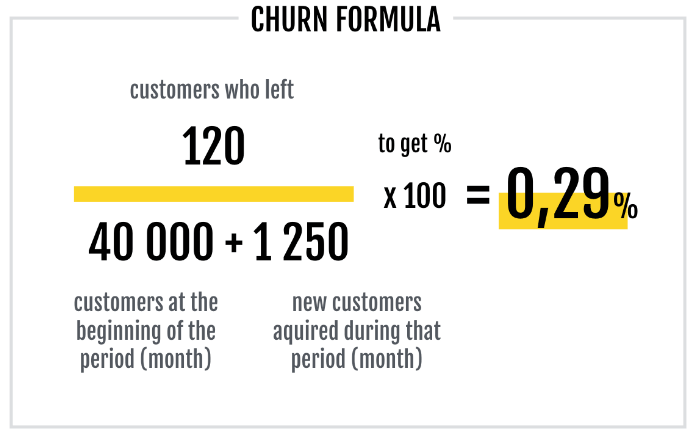
At a very basic level, you can calculate your customer churn by dividing the number of the customers you lost by the total number of customers at the beginning of a timeframe and multiply it by 100.
With the annual churn, it gets a little more tricky. Nothing you can't handle though. Take a look at the infographic below.
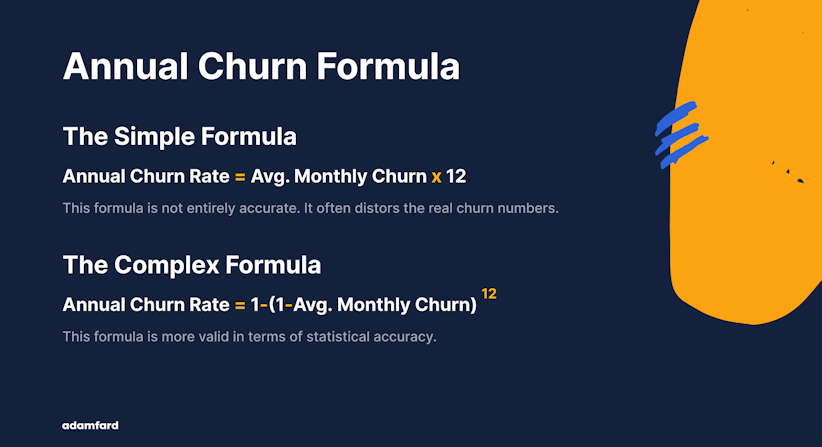
How can it be reflected in the UX roadmap?
While churn is detrimental to any service, it can also be leveraged to better understand your users’ needs and where your service fails to satisfy them.
To understand where your users experience most friction, take a closer look at your analytics—they’ll help you identify specific parts of the customer journey that are the most problematic for them.
Another common area of concern for customer churn is the onboarding flow—this is where your users need to combat a learning curve. Failing to onboard your users properly will invariably dissuade them from using your product.
Last but not least, churn rates can skyrocket due to an improperly designed user interface. When a product’s information architecture and UI aren’t intuitive enough, users may experience unnecessary friction and frustration from interacting with it.
How to reduce churn via better UX or other means?
Usability testing & user interviews. The simplest way to address churn is to simply ask your customers why they decided to cancel. This can be done in a variety of ways, but one of the most efficient ways to approach it is by conducting interviews and usability testings to document dissatisfaction with your product.
Address churn as it happens. Try to attack the root causes of customer churn as early as possible—disregarding it can quickly and significantly decrease your retention rates and your bottom line.
Invest in your best customers. Your existing customers are much more valuable than your potential ones. Make sure to communicate with them once in a while to make sure that their needs are met.
Communicate often. Businesses should interact with their customers on a regular basis, whether through emails, useful content, social media updates, and so forth. This allows you to communicate that you care about them and that their voices are heard.
Make it easy for new customers. It’s hard to overestimate the importance of proper onboarding. Never hesitate to look for ways to optimize your onboarding process in order to emphasize your product’s value and explain how your users can benefit from it.
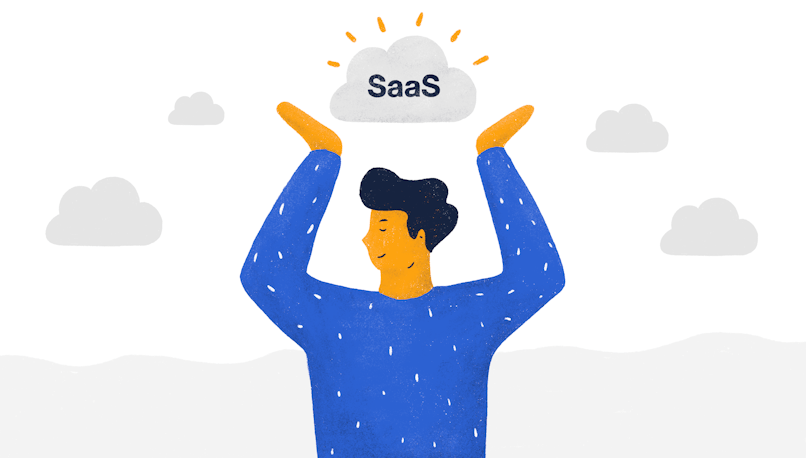
Skyrocket your Adoption, Retention & Activation.
Let us help you get your SaaS ahread of the curve through impeccable product design.
Learn more4. Cost of customer acquisition (CAC)
Fundamentally, CAC allows you to understand how much it costs your business to acquire new customers. When monitored along with the CLV metric we mentioned above, you’ll be able to get an in-depth understanding of how viable your product is. By diminishing your CAC, you’re essentially ensuring that you spend fewer resources in a more efficient manner while also boosting your revenue.
Why is it important?
Tracking your CAC allows you to learn whether it’s becoming easier or more difficult to attract new users. Similarly, you’ll be able to learn what conditions are conducive to lower CAC, which will also allow you to optimize your customer acquisition strategy and assess the overall strength of your product.
How to calculate the cost of acquiring a customer (CAC)?
Calculating your CAC is extremely straightforward; you simply need to divide the cost of your sales and social media / marketing efforts by the number of new customers. But there’s a catch—assuming that your product uses multiple channels to attract new clientele, it’s best to calculate acquisition costs for every individual channel to have a better understanding of their efficiency.

It’s important to underline that there are much more detailed ways to assess your CAC, especially when you’re a founder that needs to present stakeholders with a price for “all” of your marketing expenses. By “all," we mean salaries, overheads, paid marketing, and the tools your teams use—the sum of these expenses is then divided by the number of new customers acquired within a particular period.
CAC is a very flexible metric that provides you with detailed insight into a wide array of business parameters.
How can it be reflected in the UX roadmap?
There is a wide array of metrics that are tightly correlated to your CAC. Tracking them will allow you to make informed assessments and grow your business more efficiently. Here are some of the more important ones:
Unique visitors;
Lead-to-customer rate;
Customer churn;
Revenue churn;
Net monthly recurring revenue growth rate;
Free trial-to-paid customer rate;
Net promoter score;
How to improve CAC?
Retarget. A solid way to bring potential customers back into your product’s funnel is to retarget—this is an efficient and cost-effective way of acquiring new customers.
Test your ad copy. Run a few A/B tests to see what copy iterations have higher CTRs—this will allow you to establish what the most successful parameters are and further use them in future copy and content.
Test creative elements. If you’re using social media platforms that provide in-depth analytics, take a closer look at your CTRs, your, and the amount of engagement you get on each post. Creative testing will allow you to figure out new improvements you can make to make your visual elements more appealing to your customer base.
Improve your conversion rate. Nothing drains your budget as aggressively as ineffective marketing strategies. Use your customer persona, your user research, and prior marketing reports to continuously optimize your customer acquisition efforts.
5. Customer Engagement Score
Customer engagement is the ongoing relationship between your customers and your company and the quantity and quality of these interactions.
Why is it important?
Customer engagement is a vital metric that defines a product’s capacity for growth.
Research suggests that two-thirds of a product’s revenue is defined by effective customer engagement. An important reason as to why engagement plays such an important role lies in the profitability of selling products and services to existing customers, compared to newly acquired ones.
Furthermore, another study suggests that existing customers are twice as likely to try the new products and services you roll out compared to the users that aren’t yet paying customers.
It’s important to mention that while your pricing and growth marketing strategy do play an important role in keeping your users engaged, UX plays a vital role in creating a meaningful emotional relationship with your clientele.
How to calculate Customer Engagement Score?
Fundamentally your customers’ engagement rate is the percentage of users within a specific timeframe that have actively used your services. Dwindling engagement rates often act as an alarm, warning you that something may have gone wrong in your offering, user experience, or other product facets.
The easiest way to calculate your customer engagement rate is to divide your total number of active users within a particular cohort over a specific timeframe by the total number of users in the same cohort.
How can it be reflected in the UX roadmap?
The most common indicators that reflect the quality of your customer engagement are:
Usage frequency;
Time spent within the application;
Key features used;
Events correlating with pricing tiers;
Purchase-intent signals;
How to improve Customer Engagement Score?
The quality of your user experience is tightly connected to your customer engagement. More importantly, improving your engagement isn’t about just one thing—it should always be a carefully thought-out strategy that includes, but isn’t limited to:
Ensuring superior user experience and a relatable brand;toward
Adopt a well-crafted approach towards push notifications;
Taking advantage of conversational marketing;
Focusing on retention;
Creating a strong social media and email marketing strategy;
6. MRR (Monthly recurring revenue)
As the name of this metric suggests, MRR is the amount of revenue you expect each year. For a typical SaaS, the majority of the revenue is recurring, because this type of business is monetized through subscriptions.
Why MRR is important
First and foremost, calculating MRR is about tracking and forecasting your revenue. As such, having a good grasp of your MRR & ARR (Annual recurring revenue) allows you to plan your company's future. On top of that, revenue metrics like MRR & ARR are taken into account when it comes to investments & raising funds.
By the way, MRR & ARR are co-dependant, so which one to prioritize depends on the types of subscriptions you're selling. The longer the subscription period, the more it makes sense to prioritize ARR and vice versa.
How to Calculate MRR
The easiest formula for MRR is multiplying the number of your customers by the average amount you bill.
While this formula looks very attractive because of its simplicity, as your SaaS gets larger and more complex, your formulas should adjust for it accordingly. On top of the simple MRR, you should also account for:
Churn
Account upgrades
New accounts
Therefore, your net MRR formula should look as follows:
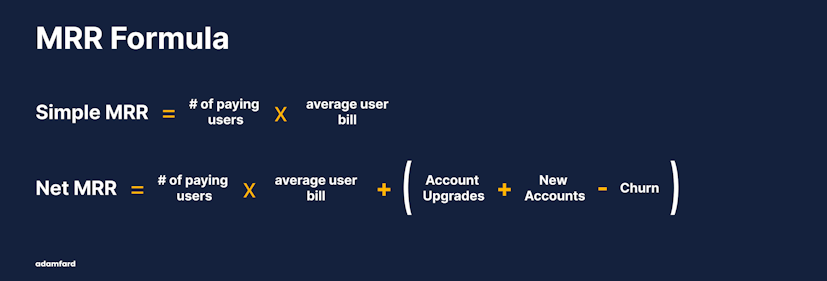
How to boost MRR
Charge more
Charging more is the first and most obvious temptation when it comes to boosting your revenue. Rightfully so. In our experience, founders (especially the new ones) are wary of bumping up the price tag. At the very least, it's worth a shot. Once you increase the subscription, see how it impacts the conversions and act accordingly.
Upsell more
A rhetorical question for you, dear reader. Which one is easier: converting a stranger into a paying customer, or offering a long-time subscriber to upgrade? – Yes, upgrading is a more viable strategy. As such, you shouldn't shy away from occasionally offering customers to tap into more value you can provide.
Invest in better UX
Sometimes, what's standing in the way of more attractive MRR numbers is churn. We have a whole article dedicated to what you can do to decrease the drop-offs. If that is the case for you, then you should consider why people leave. Is it the lack of value? Does something not work right? Are the users confused about certain features? – One way or another, proper UX research and product design will help you find answers and tackle these issues.
Attract new users
We intentionally kept this solution for last. Why invest in marketing for a product that fails to retain and engage users? – Right, that'd be a bad idea. As such, we suggest zeroing in on marketing only after the usage metrics solidify and become sustainable.
Conclusion
It’s every SaaS product’s responsibility to find the right balance between focusing on a handful of metrics and obsessing over a swarm of indicators. A company’s set of metrics should reflect its business goals and its customers’ needs and values.
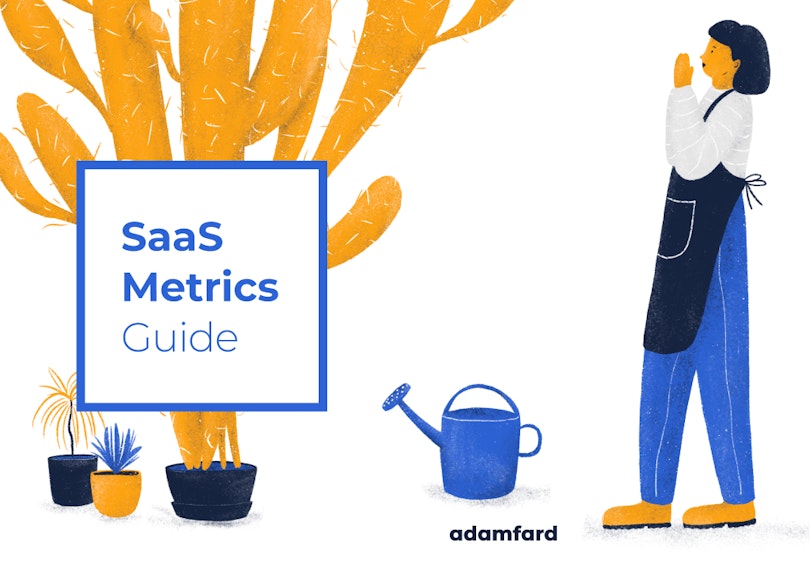
The Ultimate SaaS Metrics Guide
Download our free guide to the essential SaaS metrics.
Download Now




